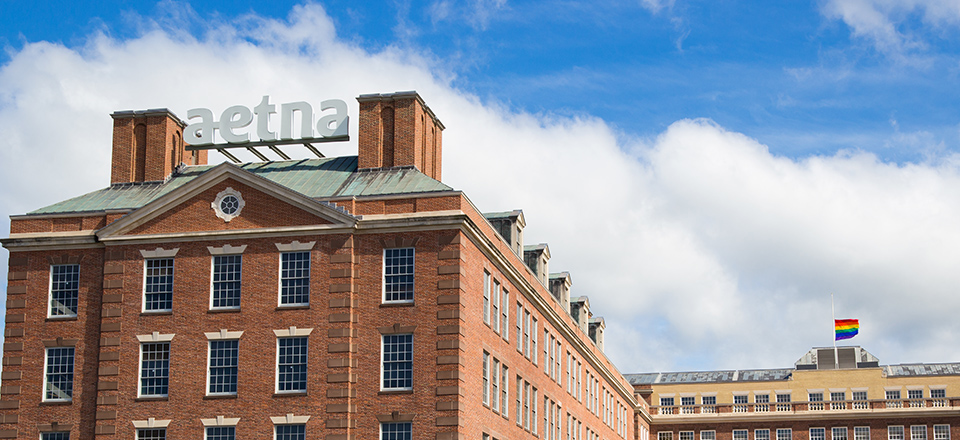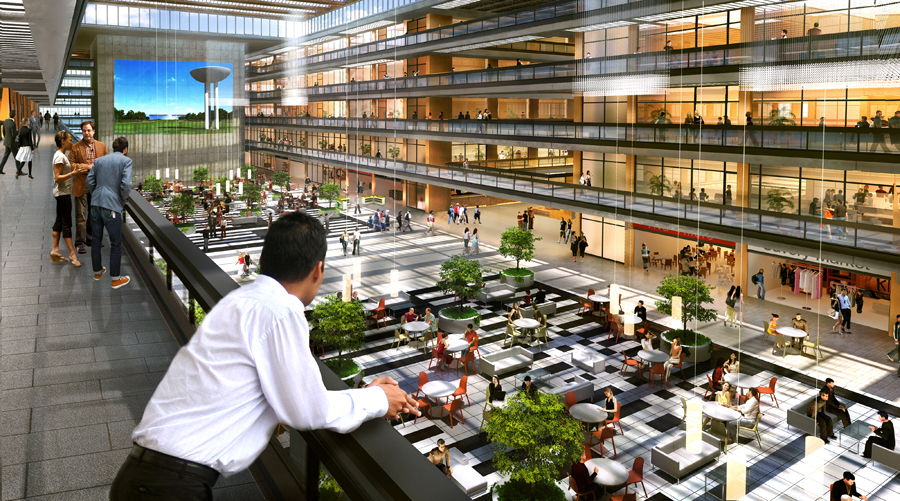
When insurance giant Aetna announced last month that it would be moving its headquarters from suburban Hartford CT to downtown NYC, it was just the latest example of Corporate America’s surprising migration back to the inner cities.
Aetna’s decision came just 18 months after General Electric had announced its own move from Fairfield, CT to downtown Boston. Meanwhile, the City of Chicago last year convinced both McDonald’s Corp. and Caterpillar Inc. to pull up their longtime leafy roots to relocate to the former concrete jungle. All are representative of an ongoing national trend where revitalized urban centers from across the U.S. are aggressively marketing themselves both to environmentally conscious young families and to the employers and businesses that covet them.
As Aetna Chairman and CEO Mark T. Bertolini explained to The New York Times, “The city provides the ecosystem of having people in the knowledge economy, working in a town they want to be living in, and we want to attract those folks… It’s very hard to recruit people like that to Hartford.”
Ouch!
Of course, such frank reasoning is fueling the projected growth of urban centers globally, which will be the subject of our upcoming BuiltWorlds Cities Conference, a full-day event set for August 24 at UI Labs in downtown Chicago.
But what of the suburbs left behind? Post-World War II America defined prosperity as the breadwinner who worked in a city, but who could afford to move his family to a spacious suburban home with a two-car garage, a yard, good schools, and a reasonable commute time. That mindset persisted for decades, even drawing many employers out into the suburban sprawl to follow the labor and their disposable income.
“The top 10% of income earners have come back to cities. The bottom 10% of income earners have left the cities.”
— Richard Florida, Professor and Author, The New Urban Crisis
from the Chicago Council Cities Conference
Now, however, cities are luring them back, offering metropolitan amenities within walking distance of revitalized neighborhoods, all connected by mass transit that allows them to go without cars and related fuel and maintenance costs. And the commutes once again are measured in minutes, not hours. “The broader, social costs of (suburban) sprawl mount even higher when its indirect consequences are factored in,” writes cities expert Richard Florida, in his new book, The New Urban Crisis, just published this spring. “People who live in far-flung suburbs and endure long commutes have higher rates of obesity, diabetes, stress, insomnia, and hypertension, and they are more likely to die in car crashes. All those risks combine to lower their life expectancy by an average of three years,” he notes.

So much for the American Dream of the 1950s and ‘60s. Indeed, 50 years ago this summer, riots ripped apart Detroit, MI and Newark, NJ, setting off a period of urban unrest that within a year would have many families in Los Angeles, Chicago and Boston looking for escape routes. But now, that exodus has reversed course. And crisis, itself, has moved to the suburbs, accelerated in no small way by The Great Recession of 2008-09.
“It is not overstating it to say that we are at the beginning of a transformational shift in our landscape, one as big as or bigger than the shift that took place immediately after World War II,” wrote Fortune editor Leigh Gallagher in her 2013 book, The End of the Suburbs. “There is no single American Dream anymore; there are multiple American Dreams, and multiple American Dreamers,” she added. “The good news is that the entrepreneurs, academics, planners, home builders, and thinkers who plan and build the places we live in are hard at work trying to find space for all of them.”
New Age of Suburban Creativity

In traditional suburbs, therefore, despite the continuing corporate defections, few local leaders are ready to surrender. Instead, they have embraced “a new age of creativity, with much more thinking outside the box,” says JLL VP Steven Jenco, who oversees suburban research for New York, New Jersey and Connecticut. Of note, JLL was hired last year by the Village of Oak Brook, IL to help find new buyers for McDonald’s soon-to-be vacated corporate campus there.
One watershed national project that Jenco points to is the ongoing renaissance of Bell Works, the 1.9-msf, mirrored-glass structure originally designed by architect Eero Saarinen in 1962 as the research and development hub of Bell Labs, which vacated the site in 2007. Located an hour South of Manhattan, the sprawling, 473-acre site was acquired by Somerset Development in 2013 and the new owner has redeveloped it into a mixed-use commercial and residential project and startup incubator. (See video here) “This was the largest vacant office building in the country,” notes Jenco. “But it has seen a lot of activity and now become its own town center, an entity unto itself. Holmdel’s main public library is even located there.”

Indeed, the death notices for America’s suburbs may be premature. Even the corporate giants that have moved back downtown often have only brought hundreds of jobs with them, not thousands. So the bulk of the workforce for companies like Aetna and Caterpillar actually remain behind, still connected by transit to the firms’ urban headquarters.
“The suburbs aren’t going away, but they are no longer the apotheosis of the American Dream and the engine of economic growth,” adds author Florida, a native of Newark NJ and now a professor and director of cities research at University of Toronto. “Overcoming the crisis of the suburbs and restoring their economic prosperity requires that suburbs become denser, greener, more mixed-use, and more connected to urban centers via transit.”
Ironically, the denser cities are now seen to be more energy-efficient and environmentally friendly than their far-flung, bedroom feeder communities. “Just from the perspective of climate change, the average urban dweller has about 1/3 the carbon footprint of the suburban dweller,” notes architect Ellen Dunham-Jones, a professor at the Georgia Tech School of Architecture, where she heads its urban design program. Her still-relevant 2010 TED Talk “Retrofitting Suburbia” was prophetic in noting the adaptive reuse of “dead malls” in suburbs of St. Louis, Dallas, Phoenix, Atlanta and more. “It’s time for suburbs to grow up,” she predicted.
Today, as that maturation takes on more urban amenities, many millennials who grew up as part of the original American Dream are not uniformly ready to reject it as they begin to raise their own families. According to a 2016 CBRE Report, Millennials: Myths and Realities, “58% of millennials still would prefer to work in the suburbs, or on the outskirts of a city or large town—a sign that the generation perhaps is less city-obsessed than previously believed to be.”

Still, suburbs have realized for years that they are in a hot war not just with cities, but with other suburbs, as well, for the businesses and residents that all need to survive and thrive. So, developers and builders had best buckle up —and stay nimble— for years of back and forth as these markets do battle.

Discussion
Be the first to leave a comment.
You must be a member of the BuiltWorlds community to join the discussion.